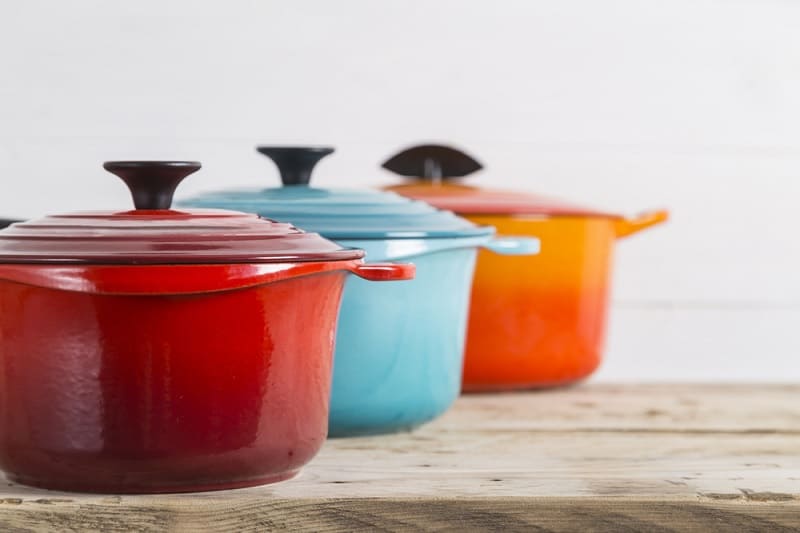Casserole dishes are a staple in many kitchens worldwide. They’re a versatile pot that can be used in the oven and on the hob, while also doubling as a serving dish.
You can purchase casserole dished in a range of colours and materials, too. What more could you want out of your cookware?
With a vast range available, there is sure to be a casserole dish out there to suit the needs of any cook. But with such vast variety, you may find yourself stuck on the question, “What size casserole dish do I need?”.
In this article, we help you choose the right dish based on your recipe and how many people you’re feeding.
What Size Do Casserole Dishes Come In?
Casserole dishes come in many different shapes and sizes. Some are shallow and square whereas others are pot-like with high sides.
However, the most important thing to consider when buying a new dish is the volume of food it holds. No one wants to bring home their brand-new pot only to realise that it isn’t big enough to hold a delicious meal for the whole family.
The size of a casserole dish is most commonly measured in litres or quarts, with 1-quart being equal to roughly 1.14-litres.
These sizes range from an individual portion size (1-quart/1.14-litres) to capacities large enough to feed a large family (bigger than 7-quarts/7.96-litres). Many households will have more than one casserole dish so that they have a pot to fit all their culinary needs.
What Size Casserole Dish Do I Need?
Now that we’ve identified the various sizes casserole dishes can come in, you may be wondering which size is best for your kitchen and unique cooking needs. Unfortunately, the answer to this isn’t as simple as it may seem!
Many factors come into play, namely the types of recipes you’ll be following and how much food you’re hoping to make:
- Cooking technique: When it comes to your cooking technique, roasting requires a broader pot so that your food has plenty of space. Comparatively, foods with high liquid content, such as stews, cook best in a dish with high sides while the width isn’t as much of an issue.
- Number of Servings: The number of people you’re hoping to feed also influences pot size. It sounds obvious, but it can still be hard to know just how much food a casserole dish will hold. As a general rule, 1 litre of food per person should be plenty for a hearty, filling meal.
Casserole dish size for 2 people
Following the rule above, a 2-litre casserole dish should be big enough to produce a healthy serving of food for one or two people. Therefore, this pot size will be ideal if you often only cook for yourself and a partner.
Many dishes this size also come in glass, which is handy for heating food in the microwave if you have any leftovers.
Casserole dish size for 4 people
When it comes to a family of four, a roughly 4-litre dish may have your name on it instead. This would also be an ideal-sized dish if you are cooking for a smaller number of people, but you’re hoping to have leftovers for another day.
Cooking a few extra portions is a great way to save money and have a delicious meal prepared when you’re too busy to cook.
Casserole dish size for 6 people
A pot closer to 6-litres can comfortably fit enough food for a family of six. These bigger dishes are perfect for larger families, dinner parties, and batch cooking!
Just ensure you can lift this dish when full; these are big pieces of kitchenware, and the bigger casserole dishes out there can become heavier than you’d think when filled with delicious food.
How Do I Know What Size my Casserole Dish Is?

If you already own a casserole dish but are unsure of what size it is, don’t fret! There is a super simple way to determine if your dish is the right one for your current cooking needs, no tricky conversions necessary. All you need to do is:
- Take your casserole dish and fill it with water
- Pour the water into a measuring jug to see how much it holds
- The volume of water will be exactly the same as the volume of food it can hold

Hannah is a freelance content writer and self-proclaimed foodie. When Hannah isn’t sitting tapping at her laptop, you’ll probably find her in the kitchen. As an ex-chalet host, she’s used to cooking four-course meals for 10+ people and loves feeding friends and family whenever possible.




